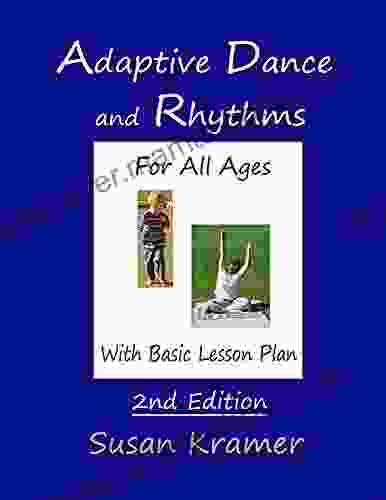Adaptive Dance and Rhythms: Empowering Individuals Through Movement and Expression

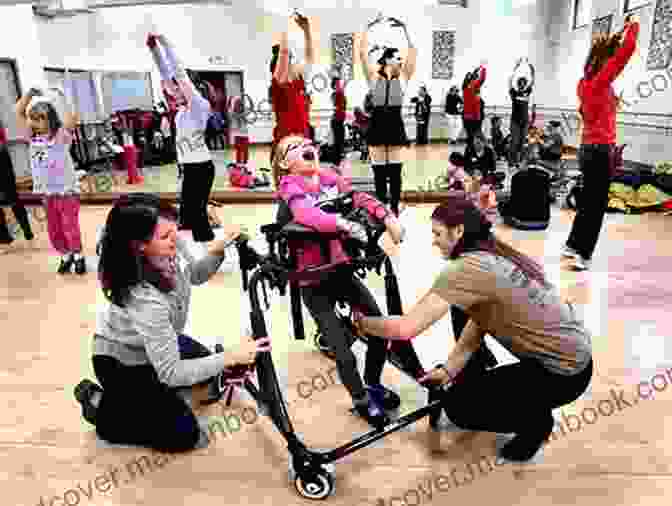
Adaptive dance and rhythms is a specialized form of dance that is designed for individuals with disabilities both physical and cognitive. It is an inclusive and empowering practice that uses movement and music to foster self-expression, improve motor skills, and build social connections. By creating a supportive environment and adapting traditional dance techniques, adaptive dance programs empower individuals of all abilities to participate in the joy and transformative power of dance.
4 out of 5
| Language | : | English |
| File size | : | 9306 KB |
| Text-to-Speech | : | Enabled |
| Enhanced typesetting | : | Enabled |
| Word Wise | : | Enabled |
| Screen Reader | : | Supported |
| Print length | : | 144 pages |
| X-Ray for textbooks | : | Enabled |
The Benefits of Adaptive Dance
Adaptive dance offers a wide range of physical, cognitive, and social benefits for individuals with disabilities, including:
- Improved Motor Skills: Adaptive dance classes incorporate exercises that help participants develop strength, coordination, balance, and flexibility.
- Cognitive Development: Dance requires participants to learn sequences, follow instructions, and interact with their surroundings, fostering cognitive skills such as memory, attention, and problem-solving.
- Socialization and Communication: Adaptive dance classes provide opportunities for participants to interact with their peers, develop friendships, and express themselves through nonverbal communication.
- Increased Self-Esteem and Confidence: Participation in dance helps individuals develop a positive body image and a sense of accomplishment, boosting their self-esteem and confidence.
- Stress Relief and Emotional Expression: Dance offers a safe and expressive outlet for individuals to release stress, cope with emotions, and enhance their overall well-being.
Adaptive Dance Techniques
Adaptive dance techniques are designed to be inclusive and accessible for individuals with a wide range of abilities. Some common techniques include:
- Adapted Choreography: Choreographers create dances that are modified to meet the specific needs of participants, ensuring everyone can participate and enjoy the experience.
- Sensory Integration: Adaptive dance classes often incorporate sensory elements, such as music, lights, and tactile props, to engage different senses and enhance accessibility.
- Assistive Devices: Individuals with mobility limitations may use assistive devices, such as wheelchairs, walkers, or adaptive chairs, to participate in dance activities.
- Assisted Movements: Trained dance assistants provide support and assistance to participants who need additional physical guidance or encouragement.
- Individualized Instruction: Adaptive dance instructors tailor their teaching methods to the individual needs and abilities of each participant, ensuring a personalized and supportive learning experience.
Types of Adaptive Dance Programs
Adaptive dance programs are available in various formats to meet the diverse needs of individuals with disabilities. Some common types of programs include:
- Community Dance Classes: Offered at community centers, dance studios, or rehabilitation centers, these classes provide accessible and inclusive dance experiences for individuals of all ages and abilities.
- School-Based Programs: Adaptive dance classes can be integrated into school curricula, providing opportunities for students with disabilities to participate in physical activity and develop their creative abilities.
- Therapeutic Dance Programs: These programs focus on the therapeutic benefits of dance, using movement to improve physical, cognitive, and emotional well-being.
- Performance Dance Companies: Dedicated to showcasing the talents of dancers with disabilities, these companies create and perform original choreographies that challenge stereotypes and inspire audiences.
Adaptive Dance Rhythms
Music plays a vital role in adaptive dance, providing a rhythmic foundation for movement and expression. Adaptive dance rhythms are often designed to be accessible and engaging for individuals with auditory or cognitive challenges. Some common rhythmic techniques include:
- Adapted Song Choices: Dance instructors carefully select songs with tempos, melodies, and lyrics that are appropriate for the participants' abilities and interests.
- Modified Beats and Rhythms: Rhythms may be simplified or modified to make them easier for participants to follow and respond to.
- Sensory Enrichments: Dance instructors may incorporate sensory elements into the music, such as varying volume levels or adding tactile instruments, to enhance accessibility and engagement.
- Live Music Performances: Live music performances can create a dynamic and engaging environment for adaptive dance classes, providing opportunities for participants to interact with musicians and experience the power of live music.
Adaptive dance and rhythms offer a transformative and empowering experience for individuals with disabilities, fostering self-expression, improving motor skills, and building social connections. By creating inclusive and supportive environments, adaptive dance programs unlock the potential of dancers of all abilities, empowering them to experience the joy, creativity, and transformative power of dance. As the field of adaptive dance continues to grow and evolve, we can expect to see even more innovative and accessible programs emerge, ensuring that everyone has the opportunity to participate in and benefit from the transformative power of dance.
4 out of 5
| Language | : | English |
| File size | : | 9306 KB |
| Text-to-Speech | : | Enabled |
| Enhanced typesetting | : | Enabled |
| Word Wise | : | Enabled |
| Screen Reader | : | Supported |
| Print length | : | 144 pages |
| X-Ray for textbooks | : | Enabled |
Do you want to contribute by writing guest posts on this blog?
Please contact us and send us a resume of previous articles that you have written.
 Top Book
Top Book Novel
Novel Fiction
Fiction Nonfiction
Nonfiction Literature
Literature Paperback
Paperback Hardcover
Hardcover E-book
E-book Audiobook
Audiobook Bestseller
Bestseller Classic
Classic Mystery
Mystery Thriller
Thriller Romance
Romance Fantasy
Fantasy Science Fiction
Science Fiction Biography
Biography Memoir
Memoir Autobiography
Autobiography Poetry
Poetry Drama
Drama Historical Fiction
Historical Fiction Self-help
Self-help Young Adult
Young Adult Childrens Books
Childrens Books Graphic Novel
Graphic Novel Anthology
Anthology Series
Series Encyclopedia
Encyclopedia Reference
Reference Guidebook
Guidebook Textbook
Textbook Workbook
Workbook Journal
Journal Diary
Diary Manuscript
Manuscript Folio
Folio Pulp Fiction
Pulp Fiction Short Stories
Short Stories Fairy Tales
Fairy Tales Fables
Fables Mythology
Mythology Philosophy
Philosophy Religion
Religion Spirituality
Spirituality Essays
Essays Critique
Critique Commentary
Commentary Glossary
Glossary Bibliography
Bibliography Index
Index Table of Contents
Table of Contents Preface
Preface Introduction
Introduction Foreword
Foreword Afterword
Afterword Appendices
Appendices Annotations
Annotations Footnotes
Footnotes Epilogue
Epilogue Prologue
Prologue Red Pesca
Red Pesca Noah Wood
Noah Wood Jaideep Parashar
Jaideep Parashar Hilda Deighton
Hilda Deighton Elouise Tynan
Elouise Tynan Ellery Akers
Ellery Akers David The Good
David The Good Frederick Seidel
Frederick Seidel Daniele Vacca
Daniele Vacca Helena Rookwood
Helena Rookwood Dora Charles
Dora Charles Revised Edition Kindle Edition
Revised Edition Kindle Edition Keith Taylor
Keith Taylor Kathrine Mortimore
Kathrine Mortimore Deborah Blum
Deborah Blum Richard Wehrman
Richard Wehrman Kindle Edition
Kindle Edition Chris Beckett
Chris Beckett Ram V
Ram V Aaron Pery
Aaron Pery
Light bulbAdvertise smarter! Our strategic ad space ensures maximum exposure. Reserve your spot today!

 Eugene ScottMore Strange Stories For Peculiar People Nightmare Fuel: Uncover the Eerie...
Eugene ScottMore Strange Stories For Peculiar People Nightmare Fuel: Uncover the Eerie...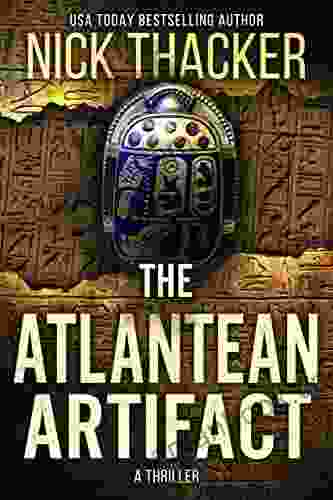
 Chuck MitchellUnveiling the Secrets of the Atlantean Artifact: A Journey into the Harvey...
Chuck MitchellUnveiling the Secrets of the Atlantean Artifact: A Journey into the Harvey... Forrest ReedFollow ·14k
Forrest ReedFollow ·14k Cormac McCarthyFollow ·15.6k
Cormac McCarthyFollow ·15.6k Ralph TurnerFollow ·13k
Ralph TurnerFollow ·13k Jason HayesFollow ·7.2k
Jason HayesFollow ·7.2k Gavin MitchellFollow ·18.1k
Gavin MitchellFollow ·18.1k Salman RushdieFollow ·9.3k
Salman RushdieFollow ·9.3k Edmund HayesFollow ·5.1k
Edmund HayesFollow ·5.1k Jared NelsonFollow ·2.7k
Jared NelsonFollow ·2.7k
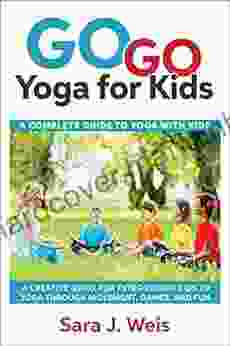
 Eugene Powell
Eugene PowellComplete Guide to Using Yoga With Kids: Benefits, Tips,...
Yoga is an ancient practice that has been...

 Benji Powell
Benji PowellHow to Make $000 Per Week on Craigslist
Are you looking for a way to make extra money...

 Gabriel Garcia Marquez
Gabriel Garcia MarquezGrocery Row Gardening: The Exciting New Permaculture...
Kick-start your gardening journey with the...

 Hayden Mitchell
Hayden MitchellUnveiling the Gripping World of Winterwood: Ben Hood...
In the annals of crime thrillers, the...

 E.M. Forster
E.M. ForsterThe Financial Advisor Guide To Managing and Investing...
As a financial...
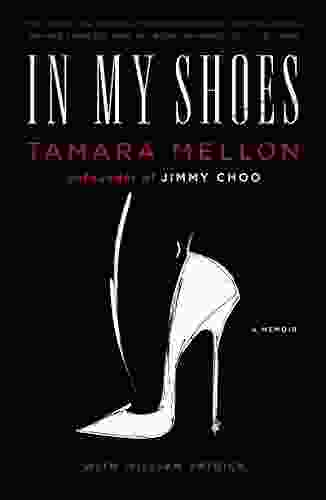
 Lee Simmons
Lee SimmonsIn My Shoes Memoir: A Poignant Journey of Resilience,...
In the tapestry of life, adversity often...
4 out of 5
| Language | : | English |
| File size | : | 9306 KB |
| Text-to-Speech | : | Enabled |
| Enhanced typesetting | : | Enabled |
| Word Wise | : | Enabled |
| Screen Reader | : | Supported |
| Print length | : | 144 pages |
| X-Ray for textbooks | : | Enabled |


